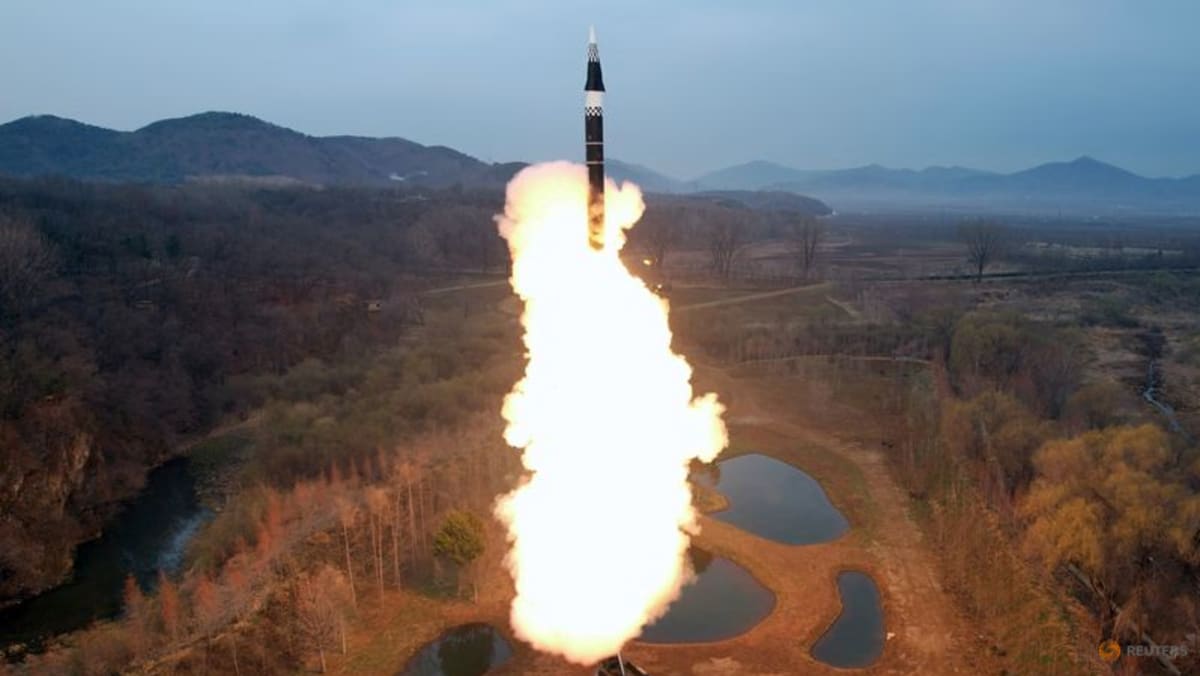“SERIOUS SECURITY THREAT”
The launch comes two weeks after Kim supervised a solid-fuel engine test for an intermediate-range hypersonic missile.
North Korea has long sought to master more advanced hypersonic and solid-fuel technologies, to make its missiles more capable of neutralising South Korean-US missile defence systems and threaten America’s regional military bases.
Hypersonic missiles are faster and can manoeuvre mid-flight, making them harder to track and intercept, while solid-fuel missiles do not need to be fuelled before launch, making them harder to find and destroy, as well as quicker to use.
Analysts said North Korea’s latest demonstration of technical improvements would potentially impact regional security.
“With its improved and unpredictable manoeuvrability it poses a serious security threat that South Korea’s missile interception will not work against,” Hong Min, a senior analyst at the Korea Institute for National Unification, told AFP.
“While it flew 1,000km yesterday, it is thought to be capable of up to 3,000km in range, giving Pyongyang much deterrence against US’ aircraft carriers deployed in the region as well as US bases in Guam.”
Pyongyang has been under a raft of sanctions since its second nuclear test in 2009, but the development of its nuclear and weapons programmes has continued unabated.
So far this year, the nuclear-armed North has declared South Korea its “principal enemy”, jettisoned agencies dedicated to reunification and outreach, and threatened war over “even 0.001mm” of territorial infringement.
Last month, the United States and South Korea staged one of their major annual joint military exercises, prompting angry retorts and live-fire drills from nuclear-armed Pyongyang, which condemns all such exercises as rehearsals for invasion.
On Tuesday after Pyongyang’s latest launch, Seoul’s defence ministry said it conducted a joint aerial exercise with Washington and Tokyo involving a nuclear-capable B-52H bomber and F-15K fighter jets near the Korean peninsula.







